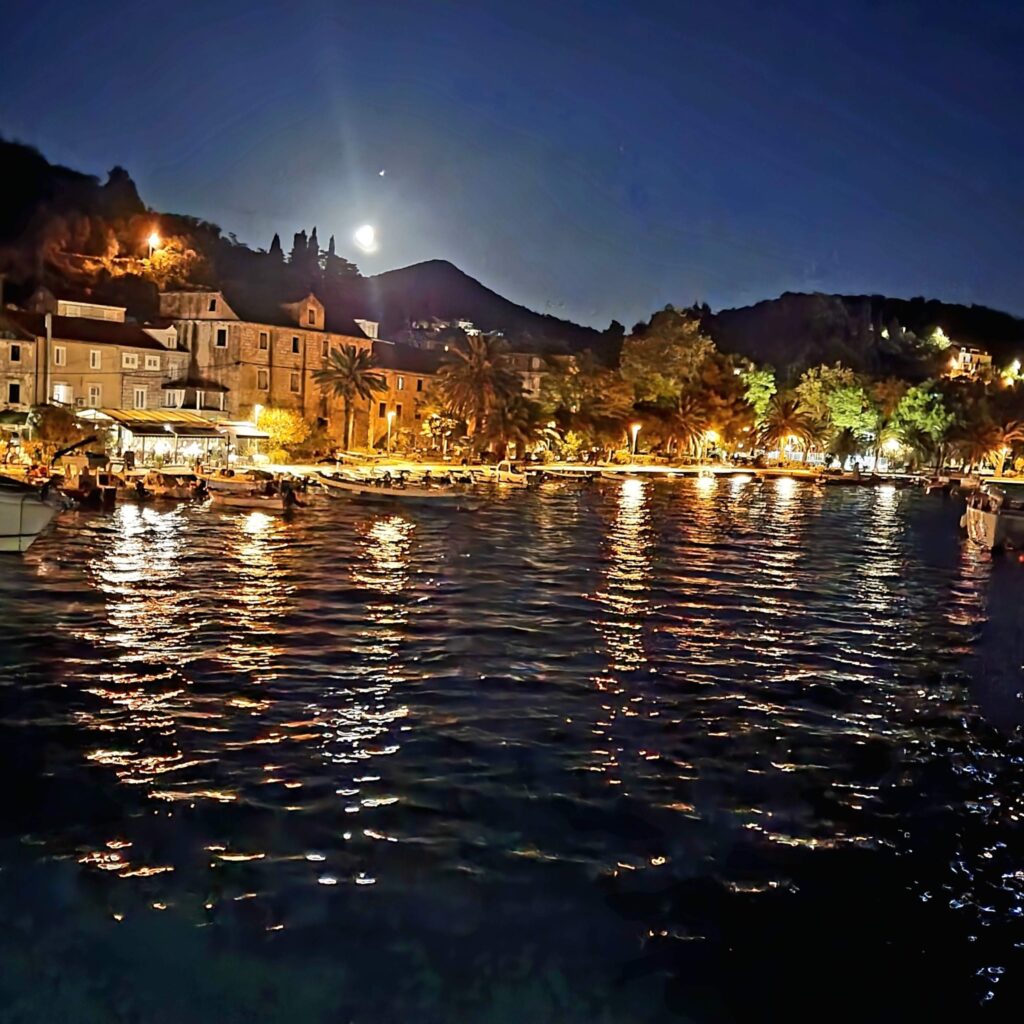Guest Post by Rebecca Weill

Meet Rebecca Weill
Rebecca Weill grew up in the East Village in New York City, then went to college and started her career in Los Angeles before moving to her beloved San Francisco, which she now considers her forever home. She lives in Noe Valley with the love of her life, Scout, a feisty terrier chihuahua rescue mutt who is always by her side. An avid yogini and fitness nut, on any given day you’ll find Rebecca in the yoga studio, running outdoors, lifting weights or working out on the Peloton. She loves being in nature, including long walks and hikes with Scout, and they spend lots of time on Twin Peaks and in Glen Park Canyon.
Rebecca developed a love of travel during her 30-year career in Marketing and PR, when she was lucky to have traveled throughout Europe and Asia, adding personal time at the end of work trips to explore. After her divorce a few years ago, Rebecca discovered the joy of solo travel and group adventure trips. Some of her favorite destinations so far are Tokyo, Kyoto, Rome, Paris, Croatia, Barcelona, Copenhagen and Corsica, where she visited with friends this past summer. High on the list for upcoming trips are Vietnam, Malta, hiking Mont Blanc, the Galapagos Islands, and an extended stay at an Ashram in India.
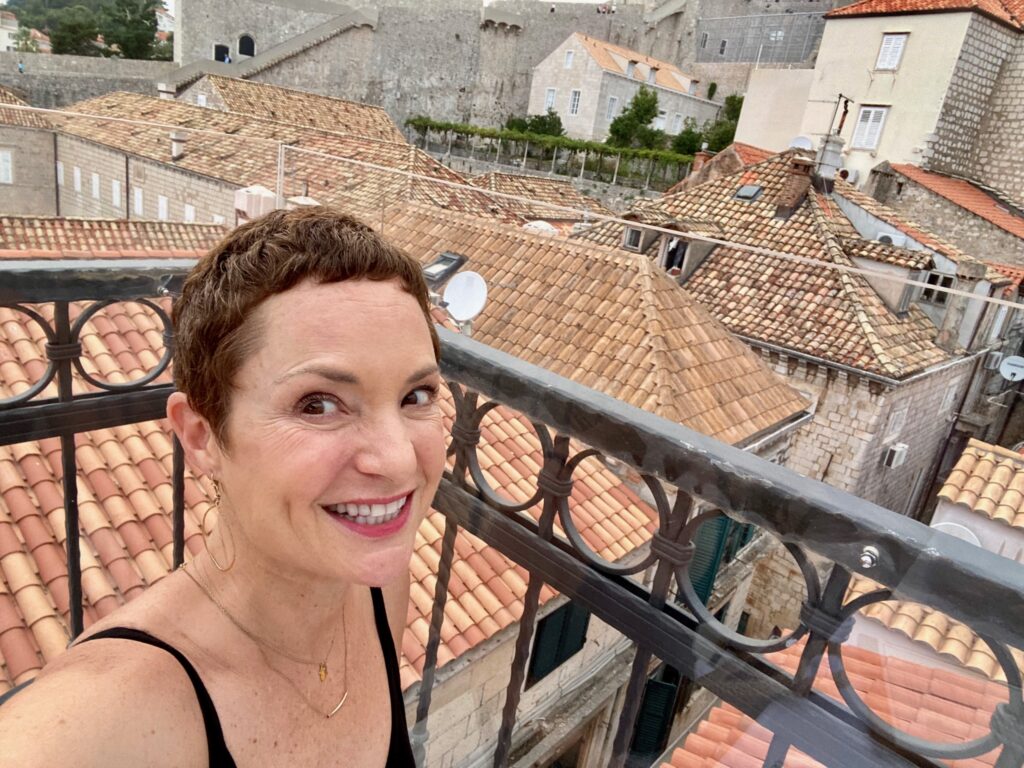
Q: Where is your favorite place in the world to travel to?
A: Ooh, it’s impossible to pick one favorite, there are just too many beautiful places! But if I had to pick one region, I’d say it would be the Mediterranean, evidenced by the fact that I keep going back! I absolutely love Italy, the South of France, Croatia, Montenegro, Greece, Corsica, Sardinia – and there are still many countries in the region to get to!
Q: What are your favorite travel tips or hacks?
I am a huge fan of Airbnb Experiences and Viator – a travel game changer for me! The experiences and tours are led by locals, often experts in their fields of art, architecture or culture, and they open your eyes to see local sights in entirely new ways. I did a tour of the Vatican with a philosophy professor that was focused on the meaning of beauty, and moved me to tears. And I sometimes do early morning runs led by local fitness instructors on Airbnb experiences. I’ll do this my first morning – it’s a great way to see the city and get oriented while it’s quiet and before the crowds descend.
I’m obsessed with finding the most comfortable but also stylish walking shoes, which is critical for doing the 10+ miles per day that I typically do on trips. I never wear new shoes for the first time on a trip (I learned that lesson the hard way!) – you must first wear them multiple times for long walks at home to break them in and be certain they don’t rub. I always bring a flat tan leather sandal that can work for day or night, and white sneakers, because then you’re covered. My current favorites are Born sandals and Adidas Sambas (trendy but more importantly, crazy comfortable).
I keep two toiletry kits packed and ready to go at all times, one for short trips and another for 2 weeks or more. This saves so much time packing. And I never leave my hotel or Airbnb without a mini kit with hand sanitizer, lotion, Advil, bandaids, lip balm and a tiny sunscreen.
Q&A Guest Post with Rebecca Weill: Croatia 🇭🇷

Q: Can you provide a brief overview of Croatia and why it is such a great country to visit?
A: To me Croatia has it all: stunning natural beauty, fascinating history, ancient architecture and ruins, delicious food, gorgeous beaches and sea for sun, swimming and boating, and warm and welcoming people. It’s a beautiful blend of Slavic and Mediterranean cultures. I love the Dalmatia region with its dramatic coastline, beautiful tiny islands, national parks for hiking and biking, incredible seafood, and rich history. Among the red-tiled rooftops, walled cities, sparkling Adriatic Sea and Roman palaces and Gothic architecture, layers of history unfold.
Q: How many days should you plan to visit Croatia to really experience the country, food and culture?
A: I recommend a 7-10 day trip. It could be done shorter but especially if you’re going to island hop, you need that long to travel between each island or coastal city, then explore each area.
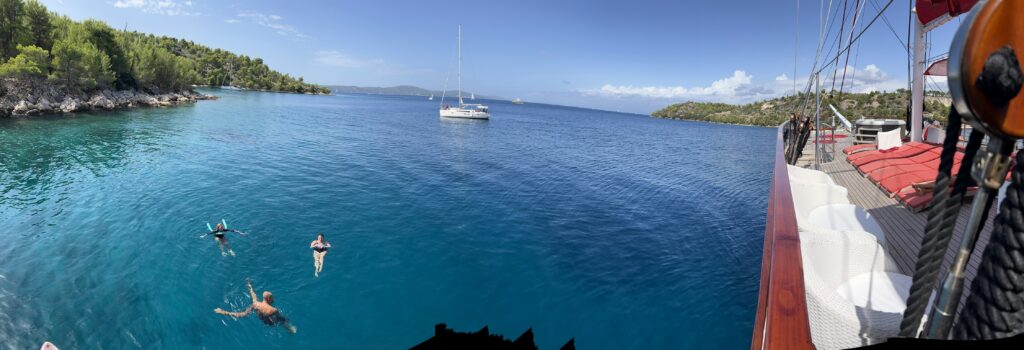
Q: When is the best time of year to visit? What is the weather like then?
A: I was there in mid-September and that seemed to be ideal, although October is probably beautiful as well and a bit cooler. Like so many over-touristed spots, I suggest avoiding July and August because it’s too crowded and hot. When we mentioned crowds and heat, the locals pointed out that August was twice as crowded and 20 degrees hotter – I can’t imagine!
Q: What should you not forget to pack when visiting Croatia?
A: Definitely bring seasick meds if you’re prone to motion sickness. While the Adriatic Sea is not as choppy as the open ocean, I still needed to take meds every day on my sailing trip. I also recommend bringing a water bottle that can be refilled at the lovely fountains they have everywhere. There aren’t always many places to buy bottled water, and the heat can be brutal so it’s important to stay hydrated!
Q: Tell me a bit about the Croatian people. Is English widely spoken?
A: The Croatians I met were warm and friendly, and just about every single local spoke fluent English, including the taxi and Uber drivers. Apparently it’s mandatory that they study English for years in school, which is why so many locals are fluent and well versed in American culture. I had many fun conversations and got lots of local info chatting with servers and taxi drivers. There’s also a bit of an obsession in Croatia with American pop music, especially from the 70s-80s, which made for fun taxi rides!
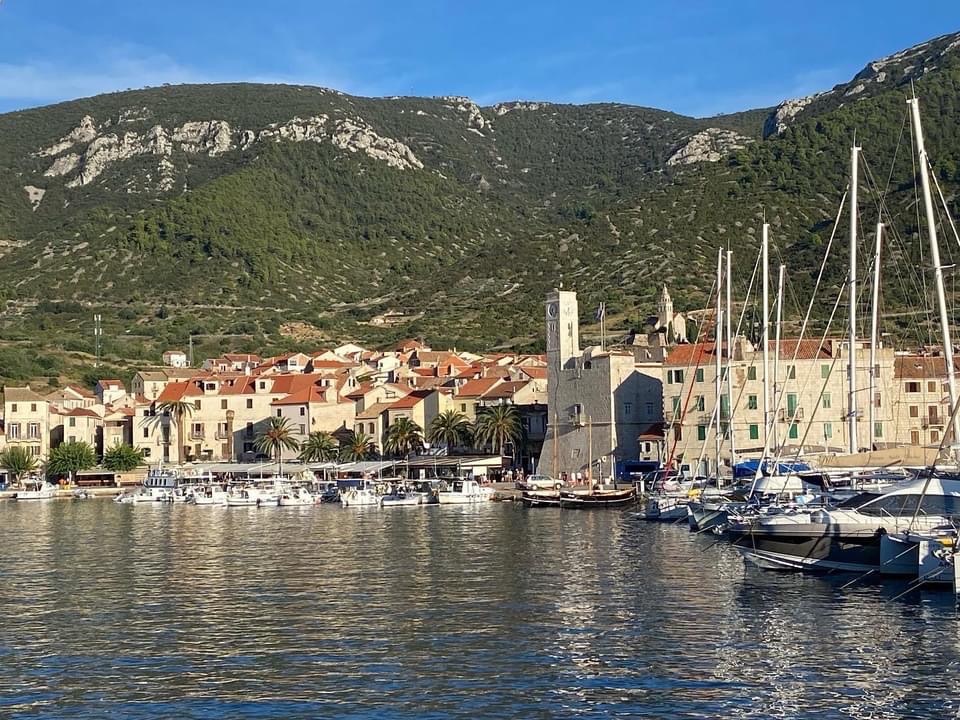
Q: What is the best airport to fly in/out of? Any specific airport tips?
A: I flew into Dubrovnik and out of Split, which overall I found to be pretty easy and convenient. I did have to fly from Split to Zagreb, then to Frankfurt, so it was quite a few stops to get out of Europe. The Split airport was tiny but well run, still I’d allow plenty of time at the Split airport. Remember to spend or exchange the local currency (kuna, still widely used although they are converting gradually to Euro) before leaving Croatia!
Q: After arriving at the airport, is it best to take a taxi to your destination? Rent a car? Take public transportation? Do they have rideshare services (like Uber) in Croatia?
A: Since the bulk of my visit was a group tour (sailing trip), it included a car service pick up on both ends. But I did notice lots of taxis, and I used Uber lots in Dubrovnik and Split, so this would work well too. Ubers were readily available, cheap and the drivers were interesting and chatty.
Q: What are the main cities in Croatia?
A: Zagreb, Split, Dubrovnik and Rijeka are the main or biggest cities. And the Dalmatian Islands are a must see in Croatia – there are 79 islands but the most visited are probably Sipan, Mljet, Korchula, Vis, Brac, and Hvar.
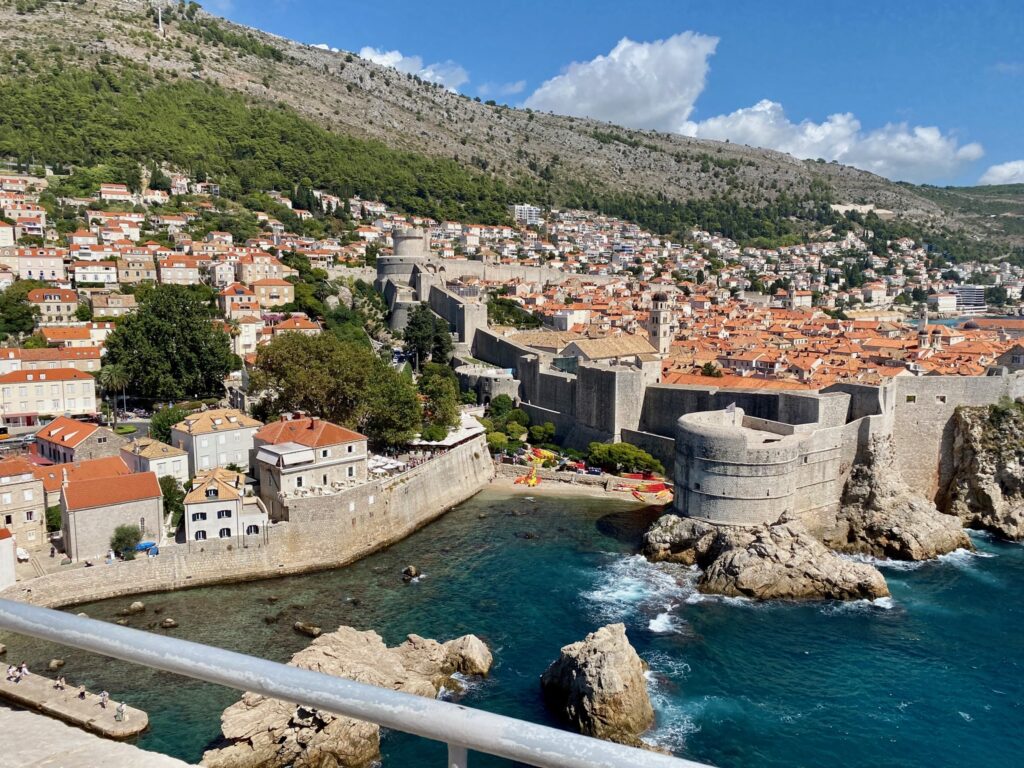
Q: What are the best areas (cities, towns) to stay in Croatia? Any hotel or super unique accommodations recommendations?
A: Any trip to Croatia should include time in Split and Dubrovnik, and island hopping throughout Dalmatia. The bulk of my time in Croatia I was on a sailboat/small cruising yacht – the beautiful My Barbara – so I don’t have many hotel recommendations, but I did really like my hotels in Dubrovnik and Split. In Dubrovnik I stayed at Hotel Kompas, on the waterfront esplanade and not far from Old Town. And in Split I stayed at Le Meridien Lav.
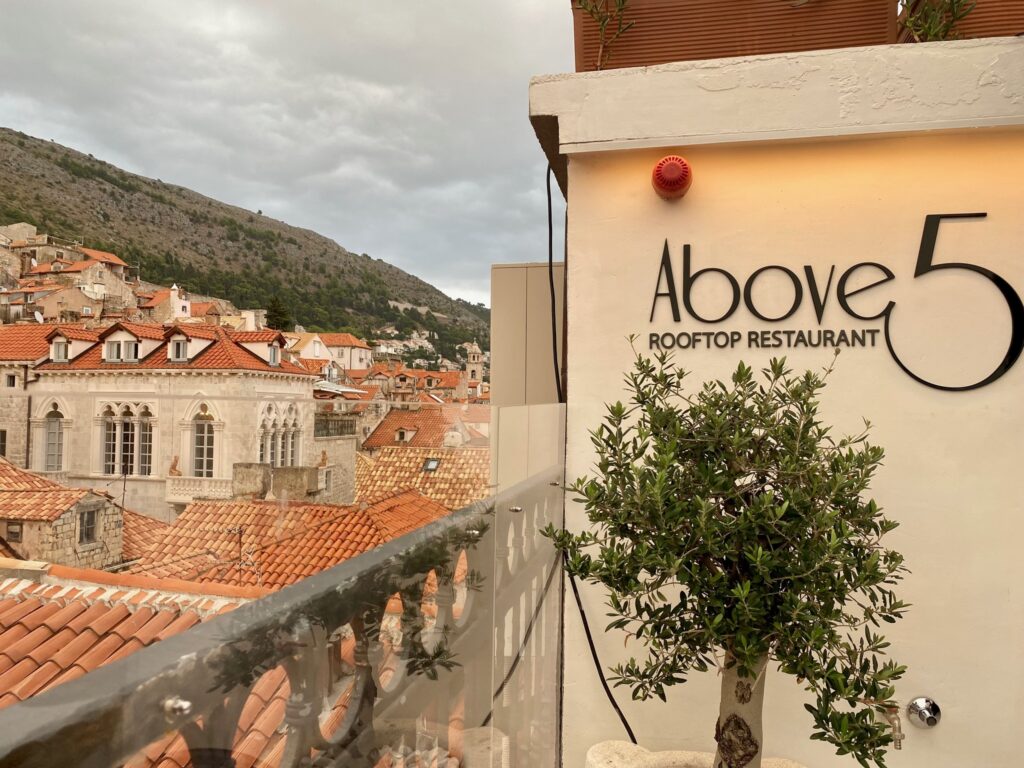
Q: What are some sites in Croatia that you absolutely shouldn’t miss?
A: Croatia is home to 10 Unesco World Heritage sites, and I think I visited most of them! The Palace of Diocletian in Split was the retirement home for a Roman emperor and is an important part of old town Split. I visited two national parks, including Mljet National Park, which was stunning! The best way to see this huge park is via bike, which you can rent, and also riding the small ferries that connect sections of the park. I also loved the historic city of Trogir – it’s basically a living museum with charming streets and a maze of Renaissance and Romanesque treasures, along with quaint cafes and local artisan shops.
Q: What are some must-do activities, unique experiences and/or tours to do while in Croatia? I know sailing is big!
A: The sailing and boat cruising was absolutely incredible – to really experience Croatia, you must spend time on the stunning Adriatic Sea! If budget allows, a multi-day small cruise or sailing trip is the way to go, so you can experience the sea-faring life that is the heartbeat of Croatia. Being on the open sea was my happy place – surrounded by the blue-green water, sometimes going hours without another boat or people in sight. We would stop for swimming and lunch, and hang out with locals at the small marinas and beaches.
Walking the walls of the Old City of Dubronik was great, even with the crowds and heat. Each alley and square of the Old City has a story, and the view from the top of the walls is stunning. And as cliche as it is – I’m a Game of Thrones fan so I had to do a tour – it was actually really fun, led by a guide who had worked on the show, and gave us inside scoop and explained how it changed life and the economy of Dubrovnik. Consider going to Old Town at night when it’s half as crowded.

Q: Where can you find the best shopping in Croatia? What area can you find unique, artisan goods?
A: I didn’t do a ton of shopping on my trip, since I was focused mostly on the outdoors, history and culture. But I did shop for beautiful limestone ceramics in Milna on Brac Island. Brac is known for limestone, and I found some lovely and unique bowls, carafes, and coasters. You’ll also find artisan jewelry pieces made with limestone on most of the islands.
Q: Tell me about the Arts scene in Croatia. Where are the best places to see live music, theater, and dance? Best museums?
A: Croatia is less about major museums and more about the Unesco World Heritage sites and living history all around you. Every city and island surrounds you with treasures, especially Trogir, Dubrovnik, Stari Grad on Hvar and the Primeval Beech Forests.
We stumbled on a small local music festival on Vis called Goulash Disko, so I got to hear live music performed by amazing, cool artists from throughout Croatia and Eastern Europe. It was so much fun and unlike any music festival I’ve been to in the US!
Several nights in port at tiny island marinas, there would be small parties with local bands and dancing. The musicians all played retro American pop hits, along with traditional Croatian folk music – we would dance for hours then collapse in our tiny cabins with the musicians still playing faintly in the distance. It was so much fun!
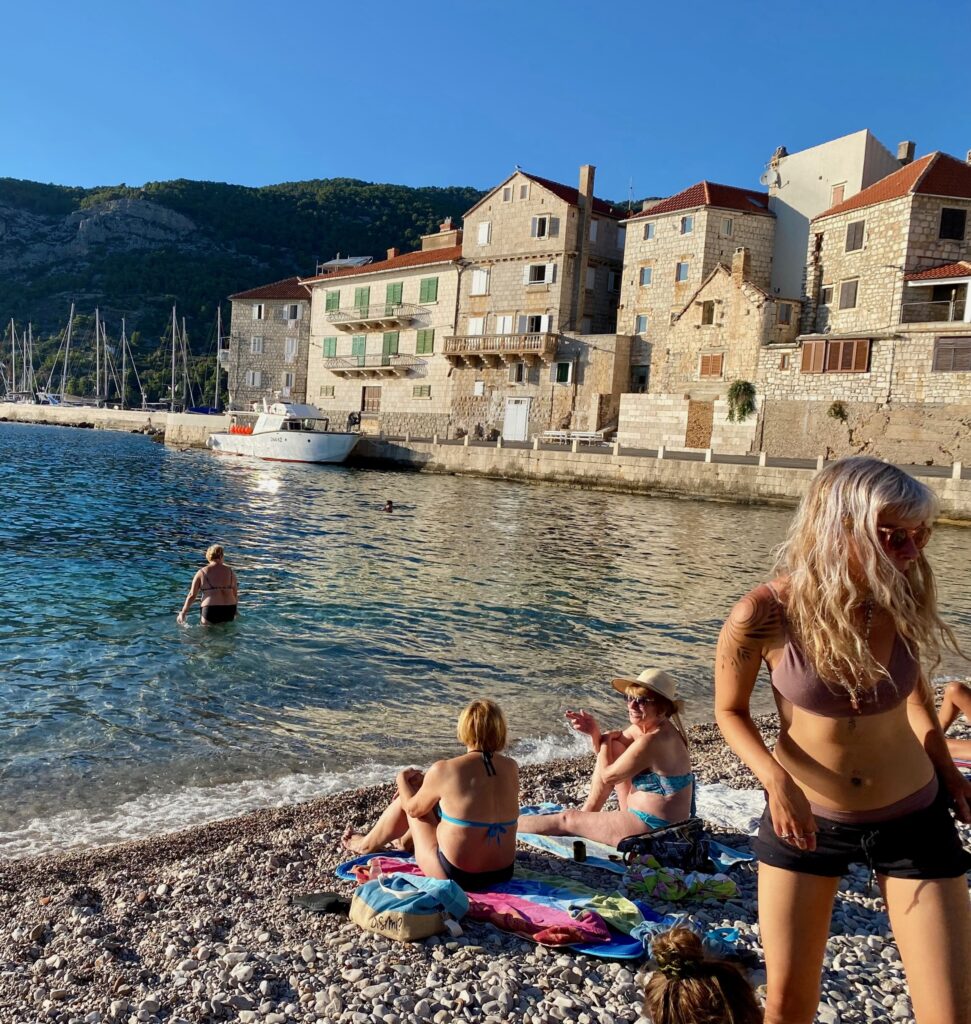
Q: Let’s talk food! Tell me about the food scene in Croatia. What’s the typical cuisine? What are some must-eat dishes? What restaurants do you recommend?
A: The food in Croatia was absolutely delicious, and right up my alley, with its emphasis on fresh seafood! I had one of my top-10 dining experiences ever perhaps in Dubrovnik at Above 5. This tiny Michelin-approved restaurant was on the rooftop of a small boutique hotel, and you have to climb 6 long steep flights of stairs to get there – but it’s so worth it! The door to the rooftop opens and you feel like you’re at a magical small dinner party with 360 degree views of the red-tiled rooftops and the coast. The food, presentation and service were amazing! Needless to say this should be booked ahead of your trip.
I also loved Nautika in Dubrovnik, and Mediterraneo on Hvar. I was lucky enough to have incredible meals prepared for me on our boat, as well as a few meals in private homes.
Gregada is a Dalmatian fresh-catch fish specialty, found all along the Adriatic Coast and with white fish and potatoes stewed together, so yummy I had to have it twice. And taverns are everywhere, and a great place to have some of the most authentic local food. Ask locals for their favorite local “konobas” (taverns) and try simple grilled fish drizzled with Istrian olive oil and paired with a glass of crisp, dry malvazija wine. The olive oil in Croatia is so delicious I wanted to drink it! Burek is a popular and delicious street food with a long Balkan history that comes with many different fillings, often vegetarian with soft kajmak cheese, feta, and spinach.
I am a big sweets person and Croatia bakeries did not disappoint! My favorite dessert was probably the Splitska torta, a cake from Split that’s a fusion of Dalmatian ingredients and aromas, made with fresh figs and almonds. I made sure to try it on every island!
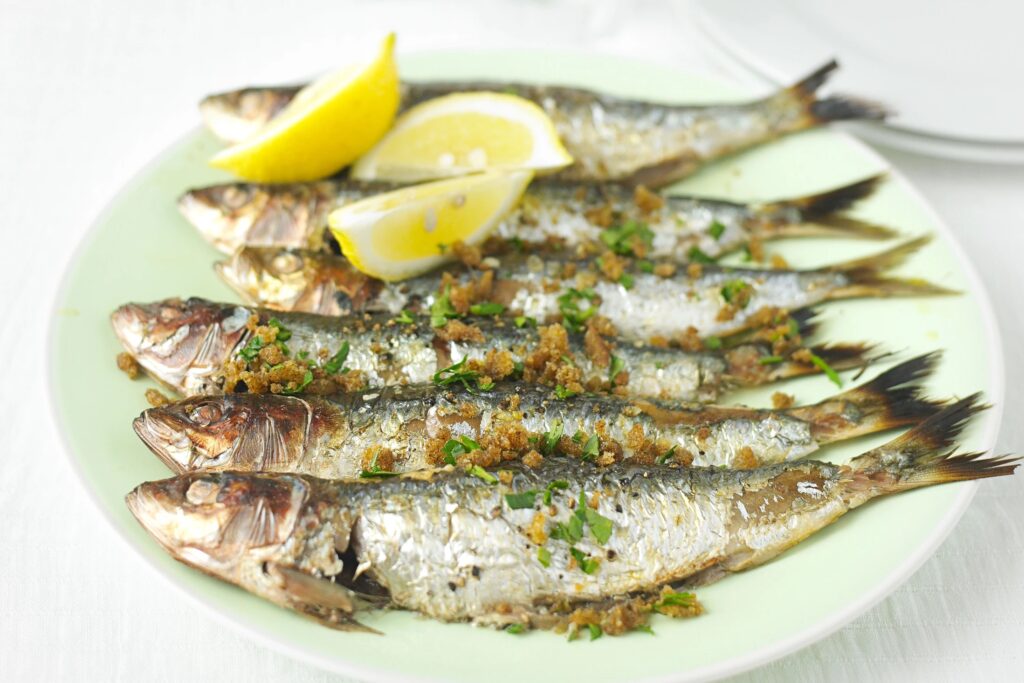
Q: What do people typically drink in Croatia?
A: Croatians are big coffee lovers which was great because so am I – the coffee is strong and flavorful. Although I didn’t have any because I no longer drink alcohol, my friends all raved about the Slavonian plum brandy, one of the most popular beverages in Croatia.
Q: Anything else you’d like to share about visiting Croatia?
A: I’ve been lucky to travel to some spectacular destinations, and Croatia is one of my favorites. Although it’s not in everyone’s budget, if you’re able, I highly recommend booking a sailing trip on a small local charter like My Barbara or a company such as Adventure Women Travel, to experience the joy of island hopping and taking in the historical sights – it was heavenly! We woke up every day surrounded by the intoxicating blue-green Adriatic Sea, spent hours each day on the water and seeing local sights, then fell asleep to the lapping waves and ping of halyards against the mast. It was much more peaceful than staying in hotels in the crowded tourist areas.
